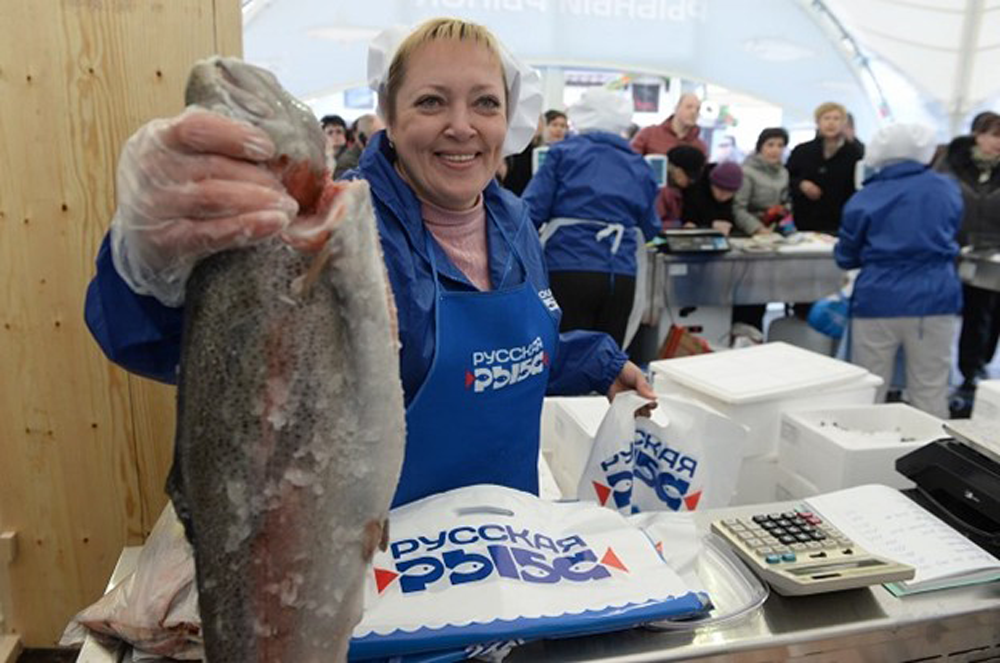According to experts, compared with the US, the EU market is more dependent on white fish products imported from Russia – the world’s largest fishery. Sanctions on Russian whitefish by the US and EU may change the export and import direction of this product in the future. Vietnamese pangasius has the opportunity to increase export volume to the European market and some countries, along with the challenge of improving quality.
World trade is changing after the Russia-Ukraine conflict when the US and Western countries impose tariffs on many economic sectors of Russia. Moscow’s white fish products, including cod and pollock, are under pressure to receive sanctions from the European Union (EU), although this is one of the main imports of the countries in the bloc.
Russian “giant” in the white fish market
Ta Ha, a market expert for pangasius products from the Vietnam Association of Seafood Exporters and Producers (VASEP), said that Russia ranks first in global pollock catch and second in cod (Northern Atlantic Ocean). Ocean, Pacific Ocean and Black Dot). In which, Alaska pollock is Russia’s main commercial resource, accounting for 35% of total exports.
Compared to the US, the EU seafood market is more dependent on white fish products imported from Russia because this is an important raw material group with the largest import proportion, accounting for 95% in the meat fish processing industry. EU white.
VASEP quoted information from Undercurrentnews, in 2021, Russia directly exports 25,000 tons of pollock products to the EU. At the same time, this country also exported 182,000 tons of gutted pollock to China. These goods are processed and re-exported to Western markets.
Last year, China exported 175,000 tons of pollock fillets, most of which were produced from Russian raw materials. About 42% of that is exported to Germany, or 73,000 tons, followed by South Korea and the US. From Germany, pollock is also exported to Poland, France, Italy and the Netherlands. German pollock re-exports stood at 31,800 tonnes worth EUR 98 million, making it the country’s third-largest seafood export by value.
VASEP expert said that when economic sanctions of the US and EU are imposed on white fish products, consumers and importers are affected immediately. The price of frozen pollock, boneless in the US has climbed to the top, about 4,600 USD/ton, higher than the historical period 2018 – 2020 (around 3,400 USD/ton) and is likely to increase even higher. . The price of pollock in the EU has increased from 2018 to 2020. During 2020 and into 2021, pollock prices of US and Russian origin have risen above EUR 3,000 (US$3,380)/ton and have been relatively stable. .
Finding opportunities to expand the market for Vietnamese pangasius
Given the EU’s demand for whitefish, finding alternative sources with importers will be difficult when a tax or embargo is imposed on Russia. It is hypothesized that an alternative product can be made such as pangasius – a potential product of Vietnam.
Ta Ha believes that the price of Russian whitefish has gone up, creating opportunities for Vietnamese frozen pangasius to grow in many European markets thanks to its price advantage compared to tilapia or whitefish imported from Vietnam. China. In the next 2-3 years, the import tax on frozen pangasius fillets from Vietnam to the EU will be reduced from 5.5% to 0%. This will be a factor to increase the price competitiveness of Vietnamese products
Since the Russia-Ukraine conflict, Vietnam’s pangasius exports to the EU have grown again after nearly 5 years of going flat. Accumulated over the first 5 months of the year, the total value of pangasius exports to the EU reached 76.9 million USD, up 95% compared to the same period last year.
The increase in export value also partly comes from the price factor. Nguyen Anh Thu, Deputy General Director of An My Seafood Import-Export Joint Stock Company, said that the price of frozen pangasius fillets exported to the EU after Covid-19 has increased by about 15%.
Ms. Do Thi Thanh Thuy, Sales Director of Nam Viet Group (Navico – ANV), explained that after the pandemic, many countries reopened, pangasius raw materials in the Mekong Delta were lacking, especially enough fish. Standard export to America and Europe. This makes the price of frozen pangasius exported to many European countries go up.

Vietnamese pangasius faces the opportunity to expand in the European market. Photo: BaotintucOn the other hand, the Navico leader said that in fact, Vietnamese pangasius and pollock and cod are two products in different customer segments and prices, so pangasius can only be partially replaced and cannot be completely replaced. .
It is expected that the UK will start imposing tariffs on Russian white fish from June. According to business leaders, when the sanctions are implemented, within the next year, one-third of fastfood, take- away in the UK may be closed due to disruption of the supply of white fish as ingredients for favorite dishes.
Deputy General Director of An My Seafood Import-Export JSC mentioned that currently, some Central European importers are experimenting with importing pangasius products from Vietnam to trial production of breaded fried fish for supply chain. Restaurants and hotels replace traditional pollock and cod products due to the lack of imported sources from Russia, and sea freight also increases prices.
According to VASEP experts, not only the US and some EU countries, US sanctions and the domino effect taking place in many related markets may affect Moscow’s exports of this item. Therefore, the opportunity to expand market share with Vietnamese pangasius enterprises is present not only in the EU but also in Korea, Japan….
However, VASEP also recommended that, in addition to keeping price competition stable with tilapia and white fish products in Europe, Vietnamese pangasius enterprises should simultaneously increase product quality and reduce the ratio glacial rate. The current situation can be an opportunity for Vietnam’s pangasius but also a challenge for the industry.
Bao Ngoc (According to the President )



 Tiếng Việt
Tiếng Việt